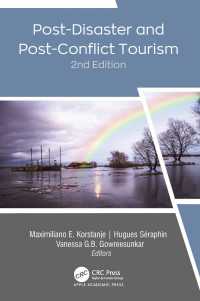Description
Explaining the means utilised by the editors of the Islamic State’s online magazines to win the "hearts and minds" of their audiences, this book is a result of a multidimensional content analysis of two flagship periodicals of the Islamic State: Dabiq and Rumiyah.
Drawing from a number of theoretical concepts in propaganda studies, the research uses comparative analysis to understand the evolution of the modus operandi employed by the editorial staff. The volume evaluates the types of arguments used in these magazines, as well as the emotions and behaviour that these triggered in readers. This book concentrates on the formats and thematic composition of a variety of the Islamic State’s e-periodicals, including Dabiq, Rumiyah, Dar al-Islam or Konstantiniyye, from the viewpoint of the constantly changing strategic situation and priorities of the "Caliphate." The e-magazines of the post-territorial phase of the Islamic State, e.g. From Dabiq to Rome and Youth of the Caliphate, were also taken into consideration.
Overall, this book does not only offer new insights into the propaganda methods of the Islamic State’s periodicals, but it also summarises their rise and fall between 2014 and 2019. The volume is dedicated mostly to academics and postgraduate students specialised in terrorism studies, political violence, and security studies.
Table of Contents
Introduction
Part I. Going virtual: Islamic State’s shock and awe campaign on the Internet
1.1. Origins of the "virtual Caliphate"
1.2. Understanding IS’s digital jihad: why has it drawn the world’s attention?
1.3. Organization of the Islamic State’s media arm
1.4. From apex to crisis: online propaganda of Daesh in the post-territorial phase
Part II. United they stand: rediscovering the thematic landscape of the "Caliphate’s" e-periodicals
2.1. Evolution of the Islamic State’s written propaganda 2014-2019
2.2. Crude beginnings: Islamic State News and Islamic State Report
2.3. Flagship magazines revisited: the thematic composition of Dabiq and Rumiyah from a comparative perspective
2.4. Francophone Internet users as a target of the propaganda machine of Daesh: the case of Dar al-Islam
2.5. Konstantiniyye as a means of reinforcing radicalism in Turkey
2.6. Reaching out to Russian communities: Furat.Press and Istok
2.7. Al-Naba as a tool of communication with internal audiences
2.8. Written propaganda reborn? Unofficial periodicals after the fall of the "Caliphate"
Part III. Reading between the lines: understanding the propaganda techniques exploited by Dabiq and Rumiyah
3.1. Methodology of the research project
3.2. Propaganda devices and argumentation used in Dabiq and Rumiyah
3.3. Triggering emotions or behaviour? Identifying core messages aiming to inspire the target audience to follow IS’s agenda
Conclusions








